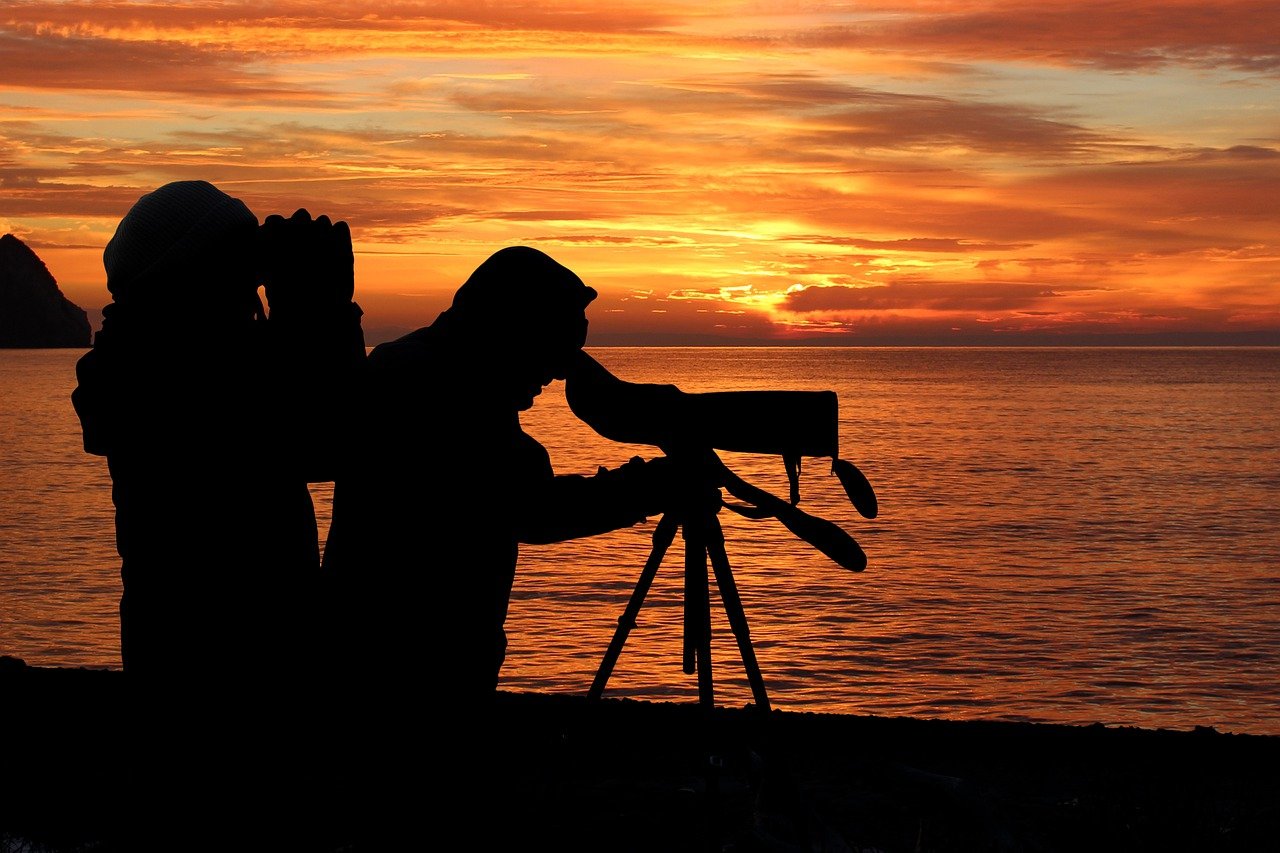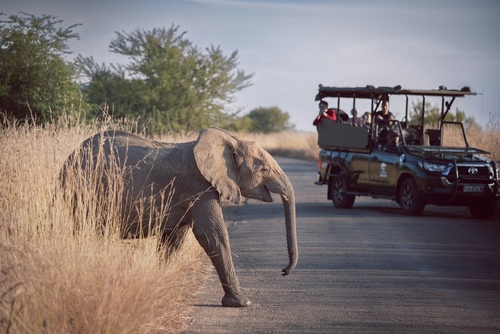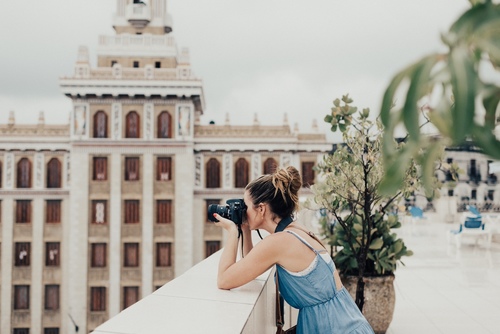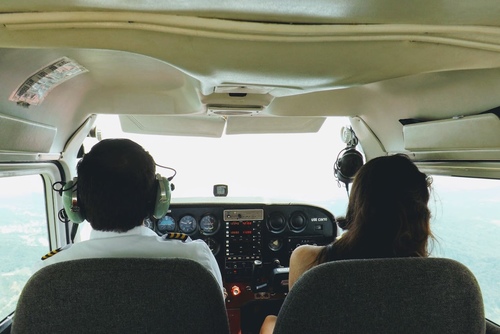But if you cannot compare one item with another, how would you know which one is better?
We are no manufacturers and can compare anything quite freely. We don’t want to make any decisions for you, though, that’s why our work is to only inform you about the peculiarities of every scope so that you can make up your own mind.
It would be unfair to leave you oblivious to what all of those numbers and features mean, so before introducing the five best spotting scopes for birdwatching, we will cover the main characteristics that determine scope’s performance.
Magnification Power
This is the first characteristic that you can tell just from looking at the scope’s name.
To put it simply, this figure shows the change in the size of an object when viewed through the lens. Spotting scope’s magnification is inferior only to the telescope’s, which is one of their primary advantages.
Instead of having fixed magnification power, like that of binoculars, spotting scopes enjoy magnification range, which shows the lowest and the highest point of possible magnification. Even though this criterion might look like the most important one, it is not.
The quality of the magnified image is way more critical. If a picture is blurry at 40x, then you will hardly discern anything at 60x. This figure shows how far you can see, not how clear.
Objective Lens Diameter
Another feature, displayed in the item’s name. The size of the objective lens determines the amount of light it can catch, which, in turn, affects the brightness and clarity of the image. It also defines the size of the field of view. Larger lenses allow for more bright and sharp images and allow you to see more of the landscape through an increased field of view. They also make the scope heavier and, as a rule, pricier.
Glass Quality
Another thing that influences the price tag and usually distinguishes scopes with the same magnification ranges. No objective lens diameters and magnification power can save you if the glass is of poor quality.
All best spotting scopes feature high-density (HD) and extra-low dispersion (ED) glass, designed to limit the amount of light that gets dispersed when passing through the lens. The high-quality glass allows magnified images to remain sharp, clear, and unaffected by distortions.
Lens Coating
Coatings further improve light transmission quality and protect lenses from external influence. Lenses without any sort of coating are a rare view nowadays, but multicoated lenses are considered the best ones out there.
These are the basic features that determine the scope’s performance. Things like eyepiece placement, eye relief, and weight can make a scope more or less comfortable to use, but they should not define your choice.
Now let’s return to the article's title. The following items are by no means the only ones, suitable for birdwatching, but they are great options that will surely prove themselves useful.
HAWKE Vantage 20-60x60 Spotting Scope (51100)
- Magnification Range: 20-60x
- Objective Lens Diameter: 60mm
- Lens Coating: Fully Multicoated
- Weight: 28 oz.
Hawke Vantage angled spotting scope opens our ceremony with a competitive magnification range of 20-60x and an average but solid 60mm objective lens.
Close focus allows the viewer to see a focused image from as close as 23ft. This scope features the lowest eye relief of 18 - 13mm but compensates for this drawback with a relatively small weight of 28oz. All lenses of this scope are covered with several layers of specialized optical coating that allows for crisp and clear images.
The waterproof body is filled with nitrogen to prevent internal fogging and is additionally equipped with a pullout sunshade to reduce sun glare. The bundle includes a mini tripod for a better glassing experience.
NIKON Prostaff 3 16-48x60 Outfit Spotting Scope (6983)
- Magnification Range: 16-48x
- Objective Lens Diameter: 60mm
- Lens Coating: Fully Multicoated
- Weight: 21.9 oz.
Among all spotters included in this compilation, this scope features the smallest magnification range, which by no means makes it inferior to others. A smaller magnification range granted this scope the widest field of view of 120ft at 16x and a Close focus distance of 10.9ft.
Nikon implemented the lens coating that allows for a true color rendition, making every image vivid and colorful, in addition to keeping it bright and sharp. This is also the most lightweight option on this list, so if you are looking for a compact spotting scope, Nikon Prostaff 3 will be a great choice.
LEUPOLD SX-4 Pro Guide 20-60x85mm HD Straight Spotting Scope (177598)
- Magnification Range: 20-60x
- Objective Lens Diameter: 85mm
- Lens Coating: Fully Multicoated
- Weight: 78.2 oz.
This Leupold scope is a true heavyweight of this compilation, weighing almost three times as much as previous models. With a water- and fogproof rugged magnesium body, this bulky spotter is built to perform well even in the harshest conditions.
Guard-Ion coating protects the 85mm objective lens from dirt and scratches. This model features the narrowest field of view of 91.7ft at minimum magnification but makes up for it by excellent dawn-to-dusk light transmission, elite-level glare reduction, and high image clarity. All features mentioned make this model one of the best low-light scopes.
BURRIS Signature HD 20-60x85mm Spotting Scope (300102)
- Magnification Range: 20-60x
- Objective Lens Diameter: 85mm
- Lens Coating: Fully Multicoated
- Weight: 67.2 oz.
A premium-grade angled spotting scope, which is worth every cent you spend on it. This is another magnesium-enhanced spotter, built to withstand challenges one might face in the field.
The 85mm objective lens features high-density glass. The apochromatic lens system prevents color fringing and delivers unmatchable resolution at any magnification.
Built-in sunshades further reduce sun glare and guard the objective lens from the elements. Its eye relief is comparable with one of the lower-magnification scopes. As indicated in their logo, Burris strives to conquer the highest picks, and this scope is one of their finest pieces of work.
NIKON MONARCH 20-60x82mm ED Angled Body (16101)
- Magnification Range: 20-60x
- Objective Lens Diameter: 82mm
- Lens Coating: Fully Multicoated
- Weight: 57.8 oz.
Another Nikon creation, this Monarch angled spotter lives up to the series’s reputation. Extra-low dispersion glass and advanced apochromatic optical system allow for exceptional image quality, and multilayer coating further improves color fidelity.
Among all mentioned 20-60x scopes, this one features the smallest close focus distance of 16.4ft. This scope fears no weather condition, as a waterproof aluminum sealed body allows it to perform well even in heavy rain.








